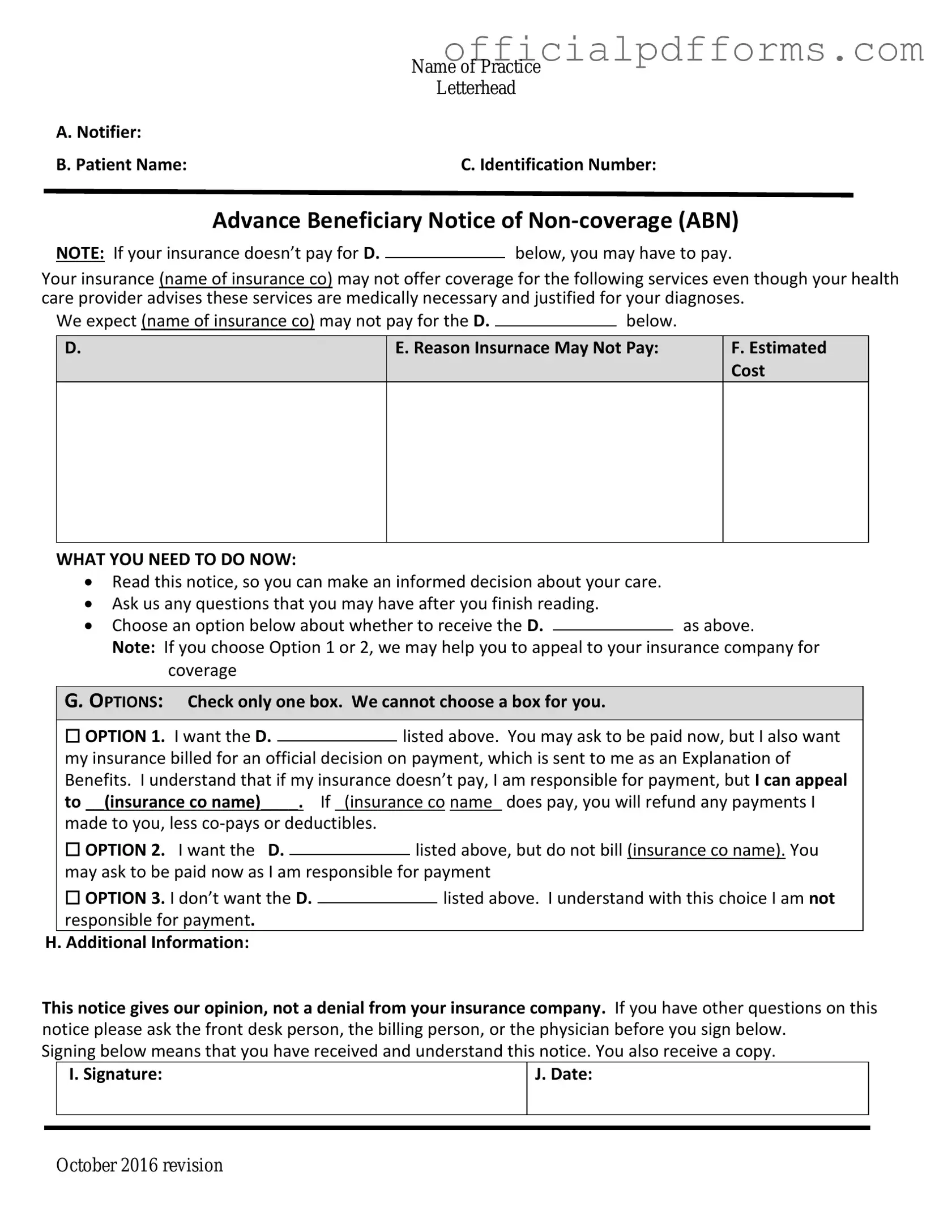Fill in a Valid Advance Beneficiary Notice of Non-coverage Form
The Advance Beneficiary Notice of Non-coverage (ABN) is a crucial document that informs Medicare beneficiaries when a service or item may not be covered by Medicare. By receiving this notice, patients can make informed decisions about their healthcare and potential out-of-pocket costs. Understanding how to properly fill out and utilize the ABN is essential for both beneficiaries and healthcare providers.
To learn more and fill out the form, please click the button below.
Access Form Online
